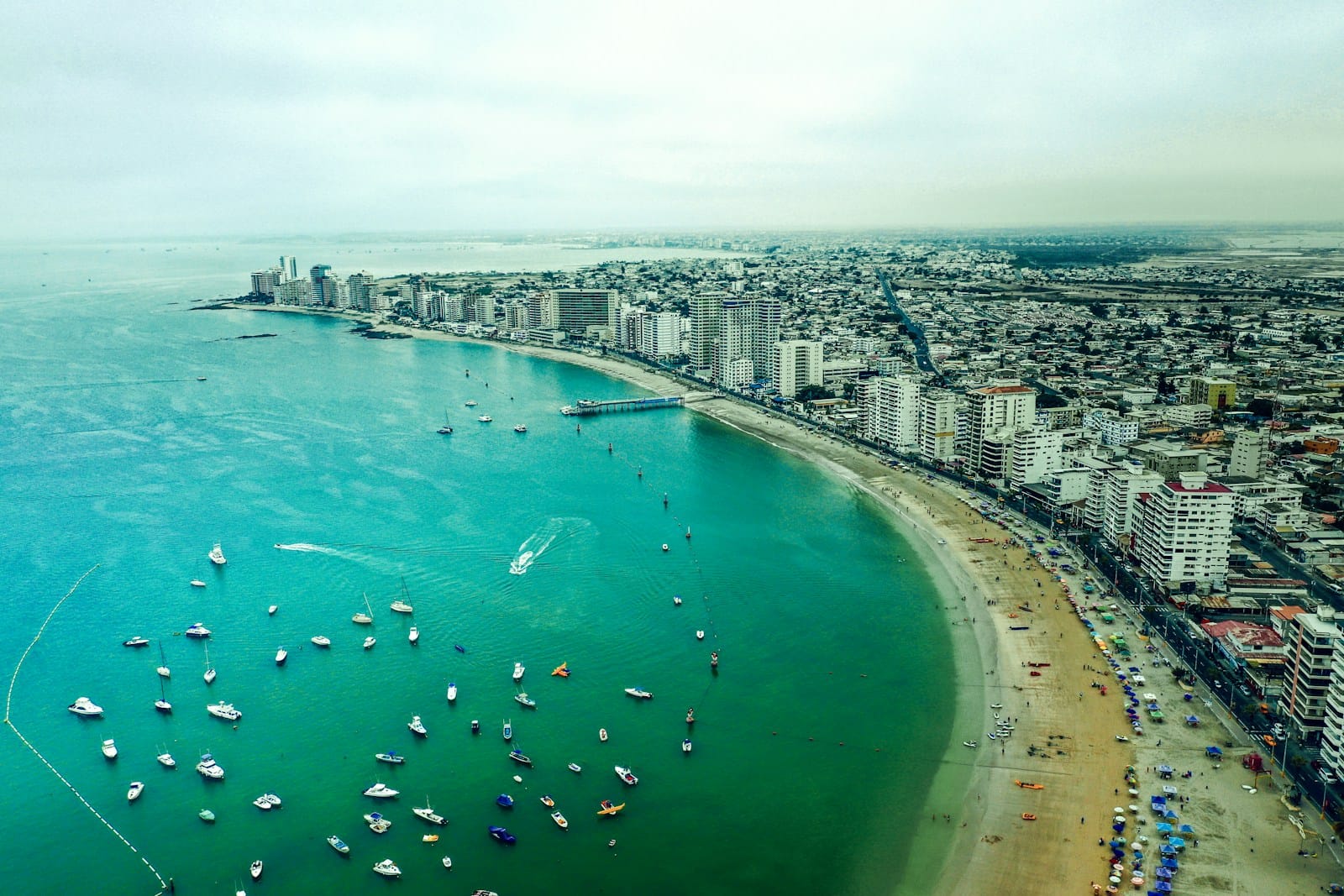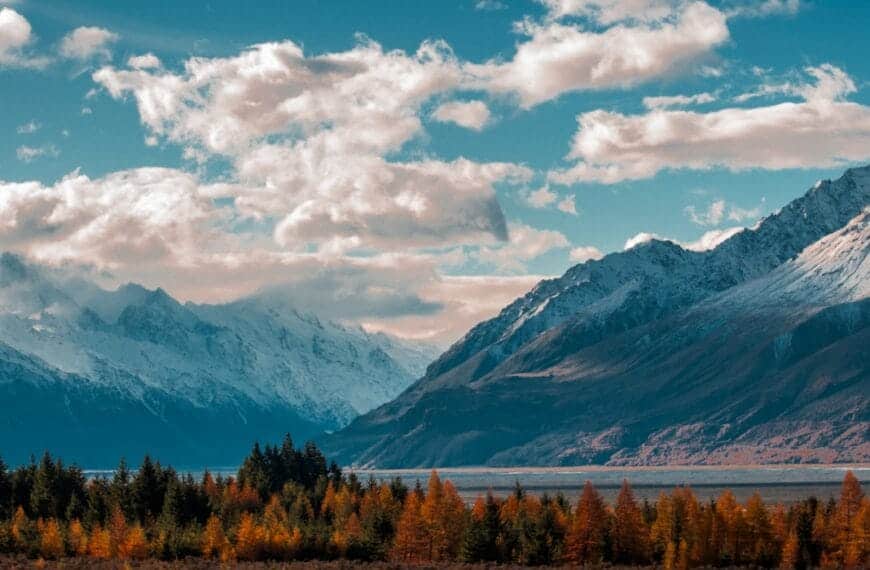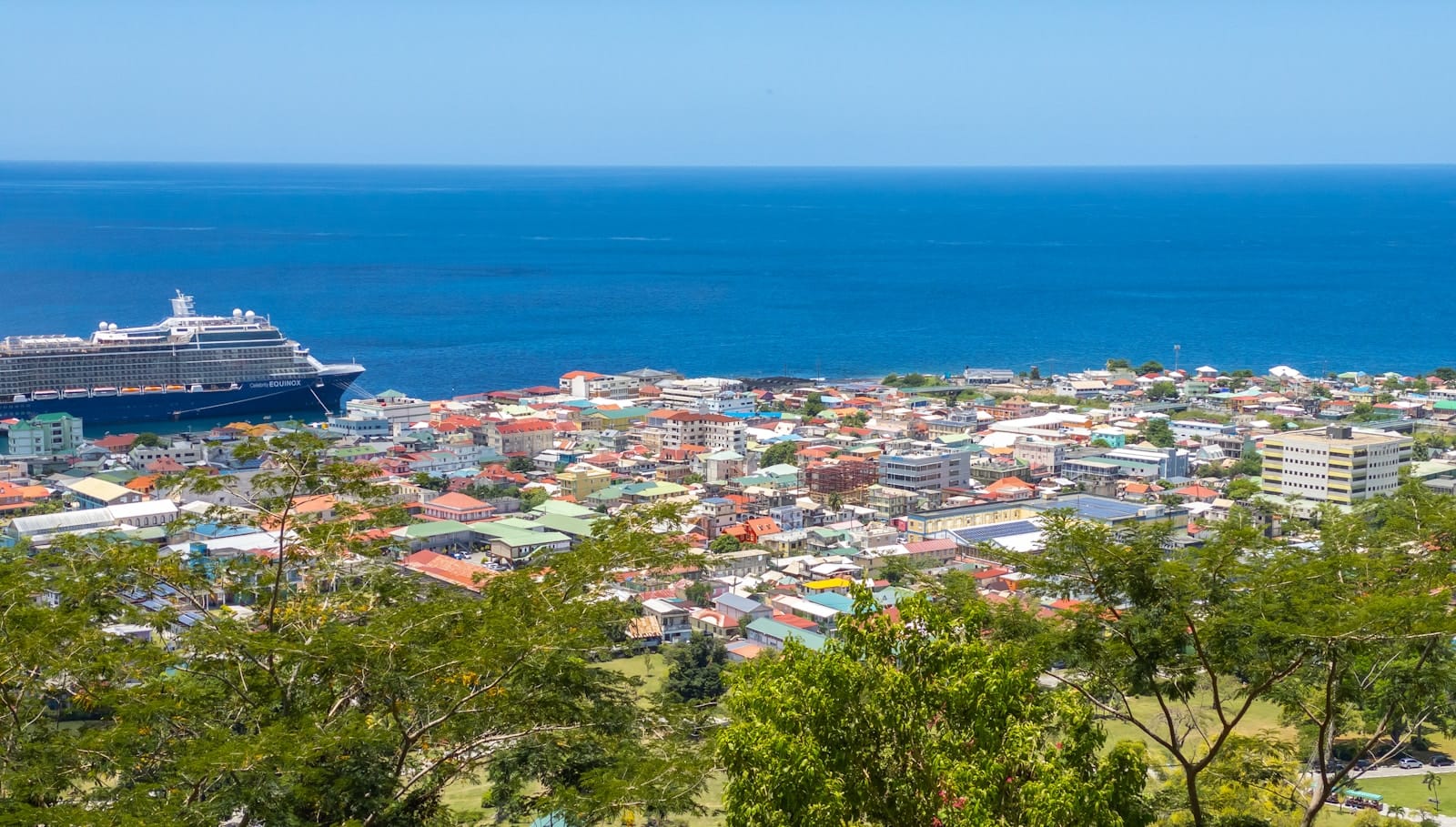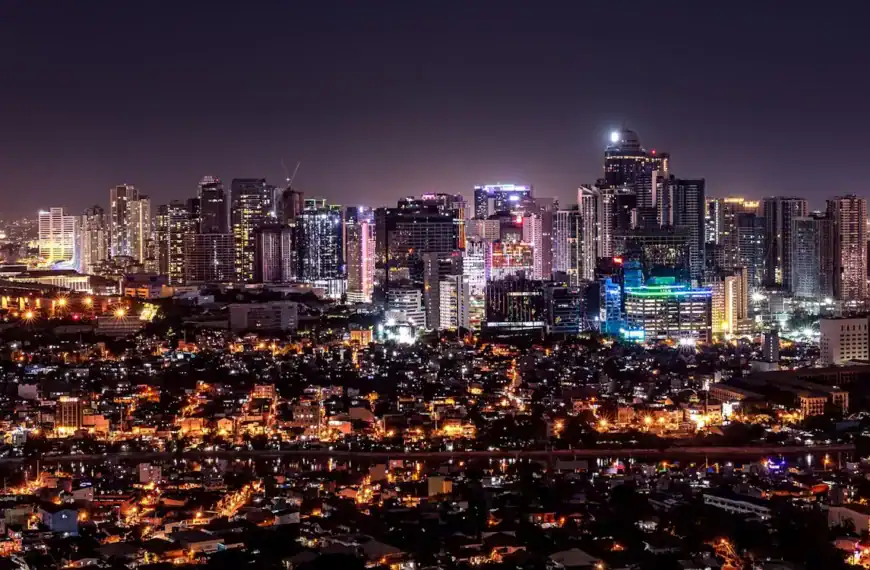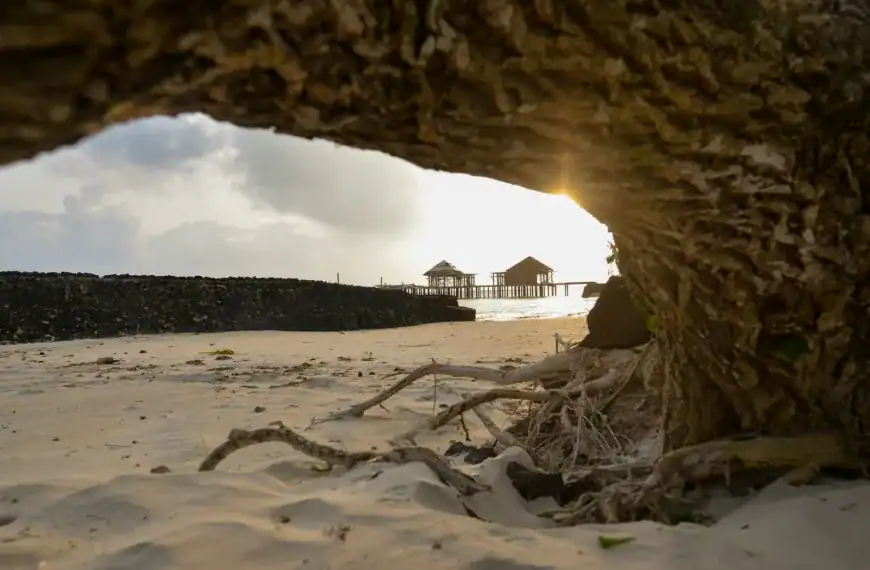Ecuador Travel Guide: Andes, Amazon & Islands in One
Intro to Ecuador Travel Guide
Ecuador is one of the most geographically diverse countries on Earth — where snow-capped Andes meet the steamy Amazon, Pacific surf towns, and the bucket-list Galápagos Islands. Packed into a country the size of Colorado, Ecuador offers world-class biodiversity, rich cultural traditions, and once-in-a-lifetime adventures.
Start planning your trip with this complete Ecuador Travel Guide — including curated Ecuador tours, top places to visit, things to do in Ecuador, when to go, and what it costs to travel across this incredibly compact yet diverse destination.
Travel Destinations in Ecuador
Amazonas Region | Andean Highlands | Coast Region | Galápagos Islands | Oriente | Sierra Region
💡Quick Facts:
Destination: Ecuador
Continent: South America
Country: Ecuador
Administrative Division: 24 provinces (includes mainland + Galápagos)
City: Quito (capital), Guayaquil (largest city)
Area: 276,841 km² (106,889 mi²)
Population: ~18.2 million (2024 est.)
Density: ~66 people/km²
Capital: Quito
Regions/Subregions:
• Sierra – Andean highlands including Quito and Cuenca
• Costa – Pacific lowlands with Guayaquil and beach towns
• Amazonía – Eastern rainforest regions like Tena and Puyo
• Galápagos Islands – UNESCO-listed volcanic archipelago
Official & Regional Languages: Spanish (official), Kichwa and Shuar (recognized indigenous languages)
Currency: United States Dollar (USD)
Time Zone(s): UTC−5 (mainland), UTC−6 (Galápagos)
Airports: Mariscal Sucre (UIO), José Joaquín de Olmedo (GYE), Seymour Airport (GPS – Galápagos)
Climate: Varies by region — tropical on coast and Amazon, cool in Andes
Known For: Galápagos Islands, Andes peaks, Amazon rainforest, colonial cities, biodiversity
🛂Arrival Info:
• Most travelers from the U.S., Canada, EU, and many Latin American countries do not require a visa for stays up to 90 days
• Visa extensions available for additional 90 days
• Passport must be valid for 6+ months from arrival date
• No eVisa or ETA required for most tourists
• Ecuador Ministry of Foreign Affairs
💉Health Info:
Recommended vaccines: Hepatitis A & B, Typhoid, Yellow Fever (required for Amazon)
Yellow fever certificate required for travelers entering Amazon from endemic countries
Dengue and Zika risk in tropical zones
Major hospitals in Quito and Guayaquil with English-speaking staff
Private clinics available in tourist cities; travel insurance advised
Limited healthcare access in rural or Amazonian regions
✅ Check travel insurance options for travel emergencies, delays, and medical needs abroad — Get coverage here
✅ Stay Informed with Official Updates: WHO – International Travel & Health | CDC – Travel health updates
🚨Travel Advisory:
• Level 2: Exercise Increased Caution
• Occasional political protests and road blockades in major cities
• Increased caution in Esmeraldas, northern border areas, and some Amazon zones
• Petty crime in markets, terminals, and tourist areas — use caution
• Earthquake and volcano risk in highland areas
• Civil demonstrations can disrupt transportation
✅ Stay Informed with Official Updates: US Travel Advisory | UK Foreign Travel Advice
📅Holidays:
New Year’s Day – January 1
Carnival – February/March (2 days before Ash Wednesday)
Independence Day – August 10 (Quito)
Day of the Dead – November 2
Christmas – December 25
Regional holidays in Cuenca, Guayaquil, and Galápagos celebrated with festivals
💰Visitor Info:
Currency: USD; ATMs available in all cities
Credit cards widely accepted in urban areas; cash preferred in rural regions
Tipping: 5–10% in restaurants, not always expected
No duty-free limits for cash USD under $10,000; declare larger amounts
Galápagos entry fees: $100 park fee + $20 transit card
Budget: $40–70/day | Midrange: $80–120/day | Luxury: $200+
✈️Airports:
UIO – Mariscal Sucre Intl (Quito): Main international gateway, ~45 min from city
GYE – José Joaquín de Olmedo (Guayaquil): Key for coastal access
GPS – Seymour Airport (Galápagos): Requires national flight + entry fees
Domestic routes available via LATAM, Avianca, Equair
✅ Delayed or canceled flight? Check if you’re eligible for compensation
🚍Transport:
Buses are the most common intercity transport; very low cost
Taxis widely available; negotiate or ensure meter is used
Metro Quito opened in 2023; limited but growing
Interprovincial buses operate on fixed schedules
Rental cars available, but not ideal in Andes or Amazon
Common scams: overcharging by taxis, fake guides near attractions
✅ Book reliable airport transfers and in-city rides in advance. Reserve your ride here
📶Connectivity:
SIM cards from Claro, Movistar, CNT available at airports and shops
eSIM supported by some carriers
Strong mobile signal in cities; patchy in Amazon and mountains
Public Wi-Fi in cafés and hotels; use VPN for security
✅ Stay connected abroad with affordable eSIM data packs. Get your eSIM here
📜Laws & Etiquette:
Drinking age: 18; alcohol sales restricted on election weekends
LGBTQ+ rights legal, but social conservatism remains outside major cities
Dress modestly in highlands and religious sites
Politeness and formal greetings are appreciated
Bargaining is common in markets
Avoid political discussions in rural areas
🛡️Emergency Info:
• Emergency numbers: 911 (national), 101 (police)
• Tourist police in Quito, Guayaquil, Cuenca
• U.S. Embassy in Quito | UK Consulate in Guayaquil
• Galápagos Tourist Help
✅ Use embassy locator tools: Embassies Worldwide
🌦️Weather:
• Andes: Spring-like year-round; dry season Jun–Sep
• Amazon: Humid, wet year-round with brief drier spells
• Coast: Hot and rainy Dec–May; dry Jun–Nov
• Galápagos: Warm season Dec–May; cooler Jun–Nov with choppy seas
• Best time to visit: Jun–Sep for mainland hiking, Dec–May for Galápagos snorkeling
✅ Stay prepared—check the weather forecast for your destination — Weather Forecast
Ecuador by Region – Where to Go
Ecuador is divided into four distinct regions: the Sierra, the Coast, the Amazon, and the Galápagos. Each offers a radically different experience.
The Andean Highlands (Sierra)
Mountain towns, Indigenous markets, volcano treks, and cultural heritage.
- Quito: Colonial capital with UNESCO-listed Old Town and Andean views.
- Otavalo: Known for its massive Indigenous craft market.
- Cuenca: A historic city with cobblestone streets and nearby Incan ruins.
- Baños: Adventure capital for ziplining, canyoning, and hot springs.
- Cotopaxi National Park: Home to one of the world’s highest active volcanoes.
The Amazon Rainforest (El Oriente)
One of the most biodiverse ecosystems on the planet.
- Tena: Gateway town for rafting and rainforest lodges.
- Cuyabeno Reserve: Wildlife-packed wetlands and jungle tours.
- Yasuni National Park: UNESCO Biosphere Reserve and Indigenous territory.
The Pacific Coast
Surf beaches, seafood, and Afro-Ecuadorian culture.
- Montañita: A lively beach town famous for surfing and nightlife.
- Puerto López: Base for whale watching and visiting Isla de la Plata.
- Esmeraldas: Known for marimba music, coastal food, and Afro-Ecuadorian heritage.
- Guayaquil: Ecuador’s largest city and main coastal gateway.
The Galápagos Islands
A natural wonder of endemic wildlife and dramatic volcanic landscapes.
- Santa Cruz: Main island with port town Puerto Ayora and the Charles Darwin Research Station.
- Isabela Island: Known for giant tortoises, lava tunnels, and volcano hikes.
- San Cristóbal: Laid-back and great for snorkeling with sea lions.
- Floreana: The least developed — quiet and raw nature.
Top Places to Visit in Ecuador
Here are the most iconic and rewarding places to visit in Ecuador, grouped by theme.
Cultural & Historic Cities
- Quito: Blend of colonial architecture and Andean life.
- Cuenca: Artistic, walkable, and surrounded by mountains.
- Otavalo: A cultural stronghold of Indigenous Kichwa heritage.
Natural Wonders & Adventure Hubs
- Baños: Base for volcano views, canyon swings, and thermal baths.
- Cotopaxi: Hike the páramo and visit glacier-fed lagoons.
- Cuyabeno Reserve: Jungle excursions with caimans, monkeys, and pink dolphins.
Island Escapes & Marine Life
- Galápagos Islands: Swim with marine iguanas and sea lions, or kayak alongside penguins.
- Isla de la Plata: Cheaper, easier “Little Galápagos” alternative from Puerto López.
Coastal Towns
- Montañita: Surf, street food, and laid-back beach vibes.
- Canoa: Quieter beach with local character and paragliding.
How to Choose Where to Go in Ecuador
Ecuador’s compact size makes it easy to mix regions — here’s how to choose based on your travel goals.
- For Culture & Cities: Explore Quito, Cuenca, and Otavalo.
- For Nature & Hiking: Head to Cotopaxi, Quilotoa Loop, and Baños.
- For Rainforest: Stay in a jungle lodge in Cuyabeno or Yasuni.
- For Islands & Marine Life: Prioritize the Galápagos or Isla de la Plata.
- Efficient Pairings: Quito + Cotopaxi + Baños or Guayaquil + Montañita + Galápagos
How to Get Around Ecuador
Getting around Ecuador is easier than many expect — just prepare for altitude changes and winding roads.
- Buses: Inexpensive and extensive, especially between cities.
- Domestic Flights: Needed for Galápagos; optional for Amazon or Cuenca.
- Taxis & Ride Apps: Uber works in Quito and Guayaquil.
- Rental Cars: Good for exploring Cotopaxi, Quilotoa, or coastal routes.
- Ferries: Inter-island transport in the Galápagos is mostly by small speedboats.
Travel Budget & Costs in Ecuador
The travel cost in Ecuador remains low for what you get — especially outside the Galápagos.
- Budget: $30–60/day — hostel, bus, street food, self-guided trips
- Mid-Range: $80–150/day — boutique stays, guided tours, internal flights
- Luxury: $200+/day — Galápagos cruises, private drivers, premium hotels
Sample Costs:
- Quito–Cuenca bus: ~$12
- Full-day jungle tour from Tena: ~$50
- Galápagos ferry ride: $30–35
- Cotopaxi entry + guide: ~$25–40
- Dinner for two in Cuenca: ~$25
Best Time to Visit Ecuador
Ecuador is a year-round destination — weather varies more by altitude than by month.
- Andes: Dry season is June–September; wet season is October–May
- Coast: Best weather is December–April (dry and sunny)
- Amazon: Rainy year-round; driest months are August and December
- Galápagos: December–May for calmer seas and lush landscapes; June–Nov for active wildlife
The best time to visit Ecuador depends on your region and travel priorities — wildlife, hiking, or festivals.
Must-See Experiences in Ecuador
These are the most unforgettable things to do in Ecuador — iconic, immersive, and uniquely local.
- Stand at the Equator at Mitad del Mundo
- Trek to the Quilotoa Crater Lake
- Canoe through the Amazon at dawn
- Take the Devil’s Nose train ride (when available)
- See blue-footed boobies in the Galápagos
- Ride the swing at the end of the world in Baños
- Shop at Otavalo’s Indigenous craft market
- Soak in volcanic hot springs in Papallacta
Discover immersive Ecuador tours and explore the most unforgettable things to do in Ecuador — from sacred temple rituals and Andean highland treks to floating markets and lakeside culinary adventures. We may earn a commission if you book through our links — at no extra cost to you.
Best Travel Itineraries in Ecuador
5-Day Highlights of Ecuador
- Day 1 – Arrive in Quito and wander through its UNESCO-listed Old Town. Visit Independence Square, San Francisco Church, and enjoy local cuisine at a traditional restaurant.
- Day 2 – Take a day trip to Cotopaxi National Park. Hike near Limpiopungo Lake and admire the snowcapped volcano before returning to Quito.
- Day 3 – Travel south to Baños. Explore the “Route of the Waterfalls,” try canyon swings, or soak in hot springs with views of Tungurahua Volcano.
- Day 4 – Head to Quilotoa crater lake, hiking down to the turquoise water or exploring nearby artisan villages. Overnight in a local lodge.
- Day 5 – Return to Quito along the Avenue of the Volcanoes, stopping at small towns and markets for souvenirs before departure.
7-Day Jungle & Volcano Loop
- Day 1 – Begin in Quito’s Old Town, exploring colonial plazas, artisan markets, and vibrant cafes.
- Day 2 – Travel east to Tena, gateway to the Amazon. Stay in a jungle lodge surrounded by lush rainforest.
- Day 3 – Join a canoe trip on the Napo River. Spot monkeys, toucans, and visit an Indigenous community to learn about traditions.
- Day 4 – Return to Baños for an evening soak in thermal baths.
- Day 5 – Spend the day adventuring in Baños with rafting, biking, or hiking to Pailón del Diablo waterfall.
- Day 6 – Head to Quilotoa crater lake. Hike along the rim or down to the water, enjoying stunning Andean views.
- Day 7 – Return to Quito via the Avenue of the Volcanoes, stopping for photos and local crafts along the way.
Classic 10-Day Ecuador
- Day 1 – Arrive in Quito and explore the Old Town’s plazas, churches, and museums.
- Day 2 – Visit the Middle of the World monument and ride the cable car up Pichincha Volcano for panoramic views.
- Day 3 – Explore Cotopaxi National Park, hiking near Limpiopungo Lake with views of the towering volcano.
- Day 4 – Continue in Cotopaxi with horseback riding or additional hikes. Overnight in a scenic hacienda.
- Day 5 – Head to Baños, relax in its thermal baths, and stroll its vibrant streets.
- Day 6 – Spend a full adventure day in Baños with canyon swings, ziplining, or waterfall hikes.
- Day 7 – Drive to Riobamba for views of Chimborazo Volcano and visit local markets.
- Day 8 – Arrive in Cuenca, wandering its cobbled streets, flower markets, and museums.
- Day 9 – Day trip to Cajas National Park for páramo hikes among lagoons.
- Day 10 – Wrap up in Cuenca with a Panama hat purchase before departing through Guayaquil or Quito.
14-Day Mainland + Galápagos Islands
- Day 1 – Arrive in Quito and stroll through its historic district. Visit Plaza Grande and La Compañía de Jesús church.
- Day 2 – Ride the TelefériQo cable car for sweeping city views. Enjoy art and food in La Floresta neighborhood.
- Day 3 – Visit Cotopaxi National Park, hiking and spotting wildlife. Overnight in a mountain lodge.
- Day 4 – Travel to Baños for hot springs and evening relaxation.
- Day 5 – Adventure in Baños: rafting, canyon swings, or hiking to waterfalls.
- Day 6 – Journey to Riobamba, then continue to Cuenca. Stroll plazas and riverside boulevards.
- Day 7 – Take a day trip to Cajas National Park for high-altitude hikes and lagoon views.
- Day 8 – Head to Guayaquil, visiting the Malecón 2000 and Las Peñas neighborhood.
- Day 9 – Fly to the Galápagos Islands (Santa Cruz). Visit the Charles Darwin Research Station.
- Day 10 – Boat excursion to nearby islands to spot sea lions, iguanas, and seabirds.
- Day 11 – Explore Tortuga Bay and snorkel with marine iguanas and reef sharks.
- Day 12 – Island-hop to Isabela for volcano hikes, penguin sightings, and snorkeling with turtles.
- Day 13 – Relax with kayaking or coastal walks before returning to Santa Cruz.
- Day 14 – Fly back to the mainland from Baltra Airport, connecting via Guayaquil or Quito.
Local Cuisine & Culinary Experiences
- Galápagos Tastes – On the islands, menus blend seafood with local produce. Grilled lobster, fresh fish, and tropical fruits highlight the region’s ocean-to-table dining.
- Andean Staples – In the highlands, hearty meals often include potatoes, corn, and quinoa. Locals enjoy llapingachos (potato patties with cheese) and locro de papa, a creamy potato soup topped with avocado.
- Amazon Flavors – Jungle communities prepare dishes like maito (fish wrapped in bijao leaves) and chontacuro (edible grubs), reflecting deep ties to the rainforest.
- Coastal Specialties – Along the Pacific coast, fresh seafood dominates. Ceviche made with shrimp or fish and served with plantain chips is a must-try.
- Street Food & Markets – Across cities like Quito and Cuenca, markets brim with empanadas, roasted corn, and exotic fruits such as guanábana and taxo. They’re perfect for a quick, affordable snack while exploring.
What to Try
- Ceviche: Shrimp, lime, and popcorn — served cold and tangy
- Locro de Papa: Creamy potato and cheese soup
- Hornado: Slow-roasted pork with corn and plantain
- Seco de Chivo: Goat stew often served with rice
- Guatita: Peanut-based tripe stew (for adventurous eaters)
- Empanadas de Viento: Fried cheese turnovers with sugar
Culinary Highlights
- Visit food markets in Otavalo and Cuenca
- Try chocolate tasting in Mindo or Quito
- Eat fresh seafood on the coast or in the Galápagos
- Book a cooking class in Quito or Cuenca
Taste your way through Ecuador with family-run restaurants, street carts, and coastal cevicherías.
Travel Safety & Cultural Etiquette in Ecuador
Ecuador is generally safe, but awareness and respect go a long way.
- Safety Tips: Watch belongings on buses; avoid isolated areas at night
- Altitude Awareness: Quito and Andes towns are 2,500m+ — hydrate and acclimate slowly
- Dress Modestly: Especially in highland towns and churches
- Greetings: A handshake or cheek kiss is common
- Language: Spanish is spoken everywhere; learn a few basics for rural regions
Where to Go Next – Pair Ecuador with These Destinations
Ecuador pairs beautifully with other South American countries.
- Peru: Combine with Machu Picchu or Sacred Valley — flights connect via Lima
- Colombia: Easy hop north from Quito or Guayaquil for coastal and coffee region contrast
- Chile: For high-altitude deserts and a long coast
- Panama: Great stopover with rainforest, city, and canal exploration
Peru Travel Guide | Colombia Travel Guide | Chile Travel Guide | Panama Travel Guide
Final Planning Checklist for Ecuador
- Finalize route by region: Andes, Amazon, Coast, Galápagos
- Book flights to/from Galápagos and permits in advance
- Prepare for altitude — bring medication and drink water
- Carry small cash (USD) for markets, taxis, and rural stops
- Download offline maps and Spanish language apps
- Bring layers — you’ll experience multiple microclimates
- Reserve jungle lodges and guided hikes ahead of time
- Check for vaccinations and travel insurance that covers remote areas
Explore Ecuador with confidence using our trusted tips, local insights, and region-by-region planning tools.
For more expert travel tips, practical strategies, and trusted tools — visit our Homepage and get inspired for your next trip.

